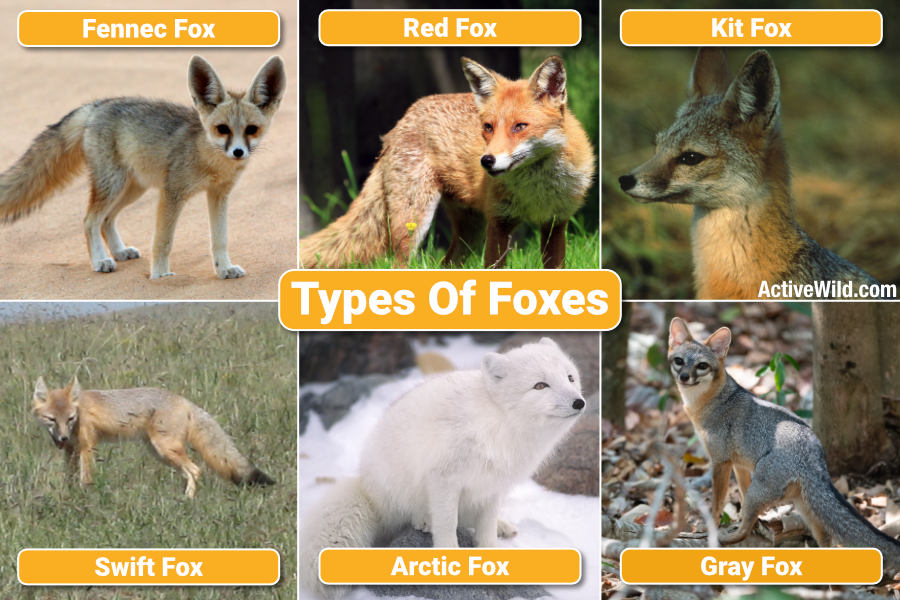Foxes are small to mid-sized members of the dog family known for their bushy tails, omnivorous diet and usually nocturnal lifestyle. These fascinating animals are found on all continents except Antarctica (although they are not native to Australia), and in habitats ranging from the Arctic to the Sahara Desert.
This page contains interesting fox facts, and a list of different types of foxes, with pictures. Let’s find out more about these adaptable, intelligent canids…
Page Index
What Is A Fox?
A fox is a small to medium-sized carnivorous mammal belonging to the dog family, Canidae, which is also home to wolves, coyotes, jackals and the domestic dog. Members of this family are known as canids.
“True” foxes belong to the genus Vulpes – a sub-group of the main dog family. Vulpes contains twelve species (source), including the red fox Vulpes vulpes, the largest fox species and one of the most widespread of all dog species.
Several other members of the dog family are known as foxes, including the South American foxes of genus Lycalopex.
Further down the page is a list of all Vulpes and Lycalopex foxes, plus other members of the dog family known as foxes, with pictures and facts.
Fox Characteristics

Foxes are characterized by their slender bodies, bushy tails, and sharp features, including pointed ears and snouts. They are known for their remarkable adaptability and can be found in a wide range of habitats, including forests, grasslands, mountains, and deserts, as well as urban environments.
Foxes are omnivorous, meaning their diet includes both animals and plants; they primarily feed on rodents, insects, birds, fruits, and vegetables.
Foxes are solitary hunters and are particularly noted for their intelligence and cunning, often featured in folklore and mythology as sly and clever creatures.
Despite their wild nature, foxes have a playful side, engaging in games and activities both with their offspring and alone.
Foxes play a significant role in their ecosystems as both predator and prey, helping to control populations of rodents and other small animals. Their adaptability to different environments has allowed them to survive and thrive in various conditions.
Foxes are highly vocal animals, and have a wide range of vocalizations, including barks, wails and yelps.
The Dog Family
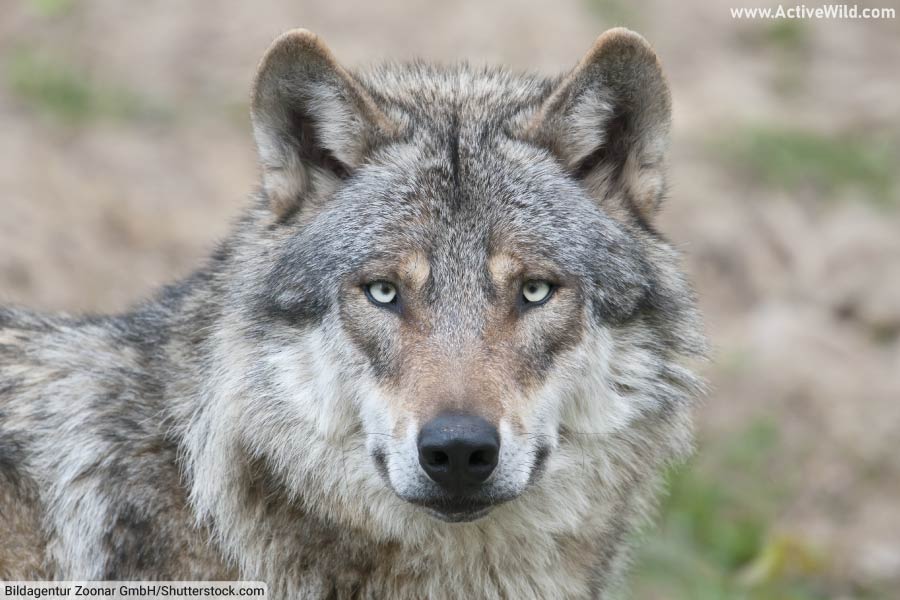
Foxes belong to the dog family, Canidae. This family contains between 35 and 40 recognized species, depending on how they are categorized. The Catalogue of Life currently lists 35 living dog species (source); the American Society of Mammalogists (ASM) Mammal Diversity Database currently lists 39 living dog species (source).
Canids (members of the family Canidae) are characterized by their keen senses, intelligence, and often complex social structures. Canids vary greatly in size, from the tiny fennec fox, with its distinctive large ears, to the imposing gray wolf, the largest member of the family.
You can find out more about dogs on this page: Dog Facts
You can see EVERY species of dog on this page: Wild Dog Species List with Pictures and Facts
Different Types Of Foxes: Fox Species List
True Foxes (Genus Vulpes)
Below are pictures and facts on every species within the “true fox” genus, Vulpes.
Arctic Fox
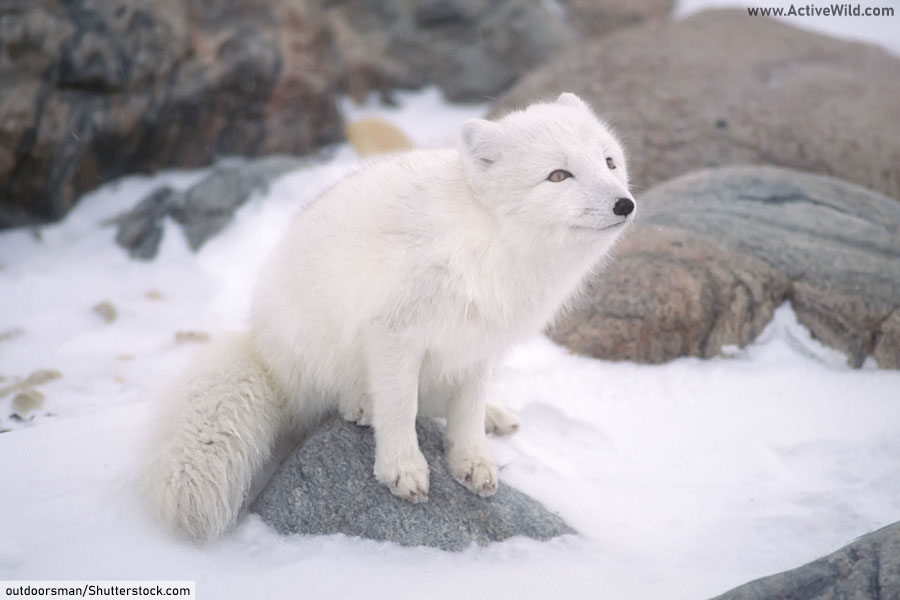
- Scientific Name: Vulpes lagopus
- Where found: Arctic regions, including Alaska, Canada, Greenland, Russia, Norway, Scandinavia, and Iceland
- Weight: 2.5 to 9 kg (5.5 to 19.8 lb)
- Length: 0.75 to 1.1 meters (2.46 to 3.61 feet) including tail
- IUCN conservation status: Least Concern
The Arctic Fox is well-adapted to living in cold environments, with thick fur that changes color from brown in summer to white in winter for camouflage, and fur-covered foot pads. It eats a wide variety of food, including rodents, birds, and fish, and will both scavenge and hunt its own prey. Lemmings are the fox’s most important food in many areas.
The Arctic fox is known for its acute hearing, which it uses to locate prey under the snow.
Blanford’s Fox

- Scientific Name: Vulpes cana
- Where found: Middle East and Central Asia, including Israel, Oman, Yemen, Afghanistan, and Iran
- Weight: 0.8 to 1.6 kg (1.76 to 3.52 lb)
- Length: 0.4 to 0.5 meters (1.31 to 1.64 feet) body length with a similarly long tail
- IUCN conservation status: Least Concern
Blanford’s Fox is an Asian fox species distinguished by its small size, large ears, and long bushy tail. It primarily inhabits mountainous and rocky regions where it can find shelter during the day.
This nocturnal fox feeds on fruits, insects, and small mammals. It is known for its incredible climbing skills, which allow it to escape predators and access hard-to-reach food sources.
Cape Fox
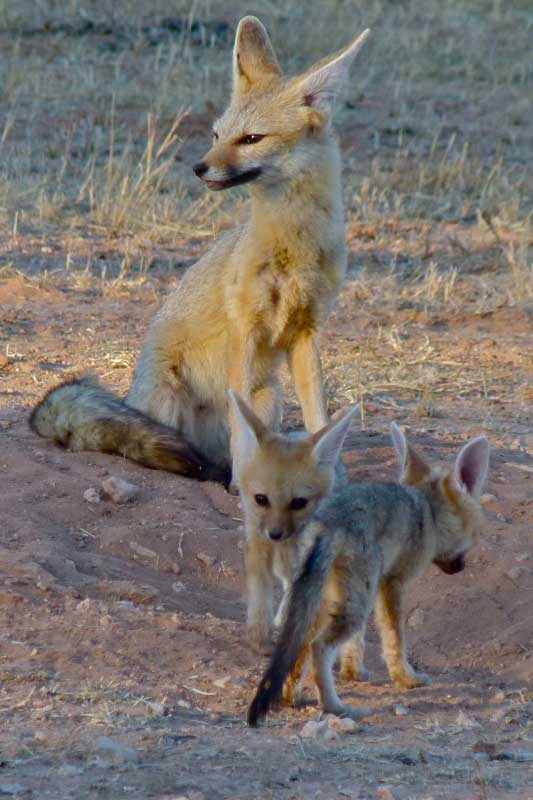
- Scientific Name: Vulpes chama
- Where found: Southern Africa, particularly in the South African savannas and semi-arid regions
- Weight: 3.6 to 5 kg (7.9 to 11 lb)
- Length: 0.45 to 0.61 meters (1.48 to 2 feet) body length with a tail of about 30 to 40 cm
- IUCN conservation status: Least Concern
The Cape Fox is the only true fox found in southern Africa. It has silver-gray fur, a bushy tail with a black tip, and is the smallest canid in the region (it is occasionally preyed on by the larger black-backed jackal).
A nocturnal species, the Cape fox preys on rodents, insects, and occasionally small birds. It is solitary, except during the mating season, and uses burrows (usually the abandoned burrows of other species) for shelter.
Corsac Fox
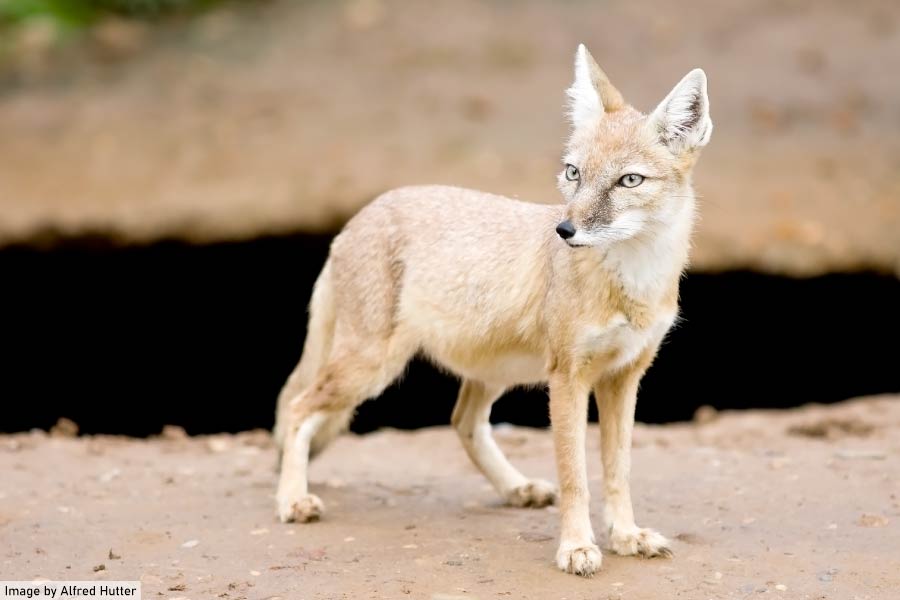
- Scientific Name: Vulpes corsac
- Where found: Steppes, semi-deserts, and deserts of Central Asia
- Weight: 1.6 to 3.2 kg (3.5 to 7 lb)
- Length: 0.5 to 0.6 meters (1.64 to 1.97 feet) body length with a tail of about 25 to 35 cm
- IUCN conservation status: Least Concern
The Corsac Fox, also known as the Steppe fox, or just the corsac, is an Asian true fox species. It is adapted to dry, open landscapes, and generally avoids forested areas. It has a light orange-tan coat, which provides camouflage in its desert and steppe habitats.
The Corsac Fox does not dig its own burrows but instead takes over those abandoned by other animals. Corsac foxes have a social structure that can vary from solitary to small groups, depending on the availability of food.
Fennec Fox
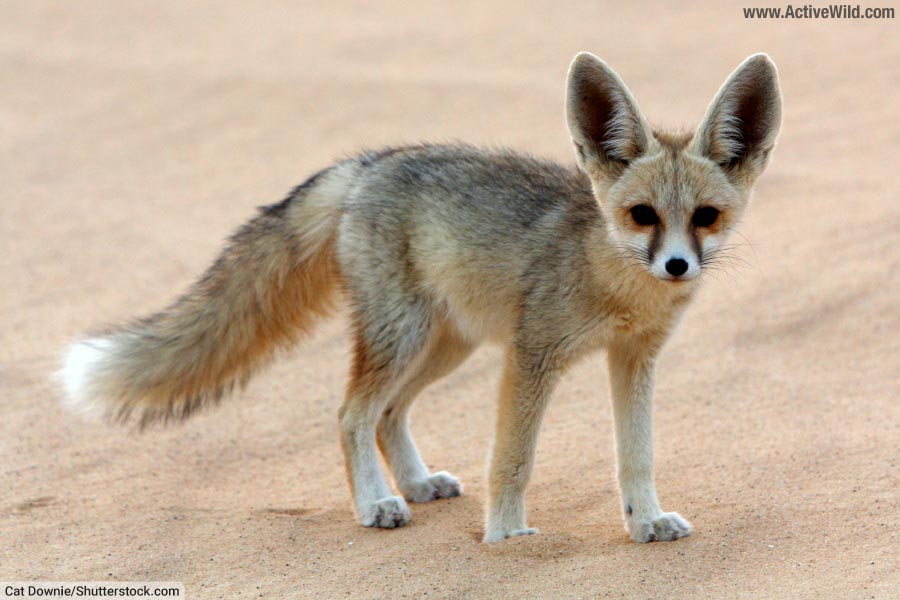
- Scientific Name: Vulpes zerda
- Where found: Sahara Desert and other parts of North Africa
- Weight: 0.7 to 1.6 kg (1.5 to 3.5 lb)
- Length: 0.24 to 0.41 meters (0.79 to 1.34 feet) body length with a tail of about 20 cm
- IUCN conservation status: Least Concern
The Fennec Fox is the smallest fox species, and one of the most recognizable, due to its distinctive large ears, which help to dissipate heat and locate prey underground. This desert living fox has a creamy-colored coat that reflects sunlight during the day and provides warmth at night.
The Fennec Fox is an omnivore, feeding on plants, rodents, insects, and birds. The species’ burrowing lifestyle helps it to avoid the extreme heat of its desert home.
Bengal Fox
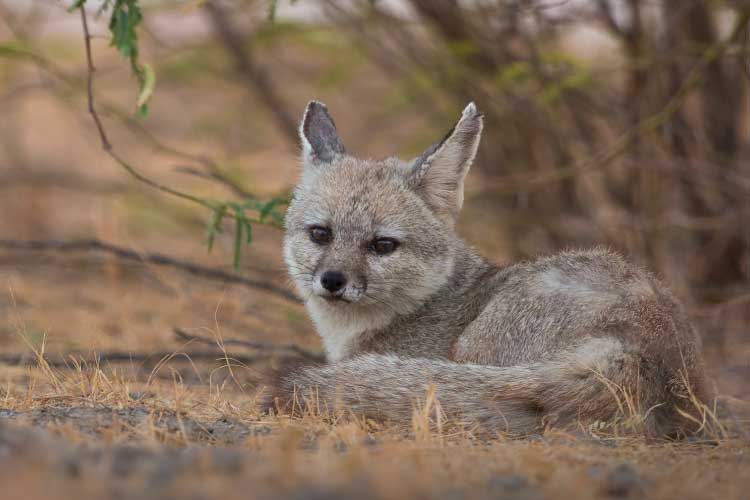
- Scientific Name: Vulpes bengalensis
- Where found: Indian subcontinent, including India, Nepal, Bangladesh, and Pakistan
- Weight: 2 to 4 kg (4.4 to 8.8 lb)
- Length: 0.45 to 0.6 meters (1.5 to 2 feet) body length with a tail of about 25 to 30 cm
- IUCN conservation status: Least Concern
Also known as the Indian fox, the Bengal fox is recognized by its reddish-brown fur, bushy, black-tipped tail, and long ears. It inhabits open grasslands, thorn scrub, and semi-desert regions, where it feeds on rodents, reptiles, crabs, and fruit. This fox is nocturnal and uses dens for shelter. It is not shy and often seen near human settlements.
Kit Fox
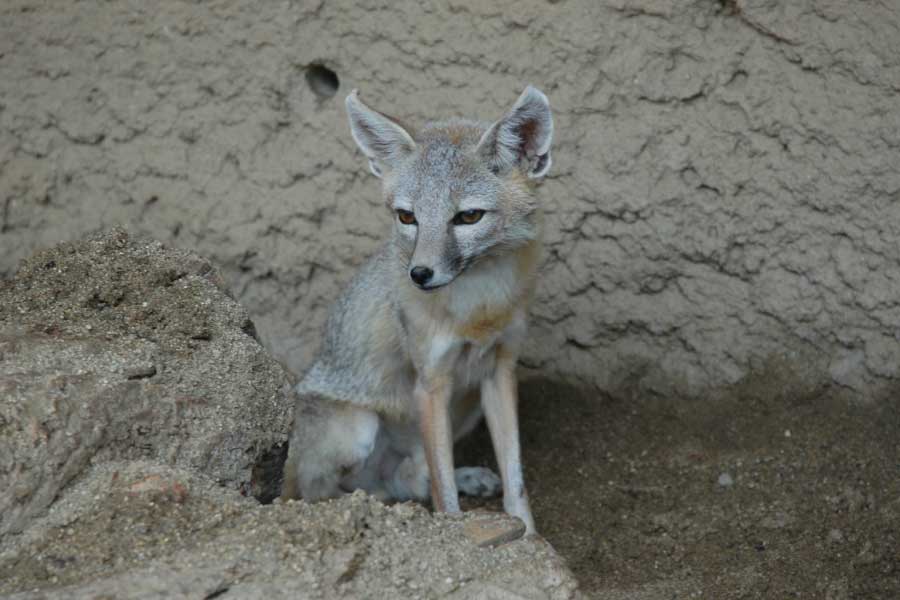
- Scientific Name: Vulpes macrotis
- Where found: Southwestern United States and northern and central Mexico
- Weight: 1.6 to 2.7 kg (3.5 to 6 lb)
- Length: 0.4 to 0.5 meters (1.3 to 1.6 feet) body length with a tail of about 25 to 32 cm
- IUCN conservation status: Least Concern
The kit fox is the smallest of the four true fox species found in North America. It is found in arid and semi-arid environments, including deserts and scrublands. Adaptations for living in dry, hot habitats include large ears for thermoregulation and a sandy-colored coat for camouflage.
This desert specialist will dig its own dens, but is also known to use the abandoned burrows of other species.
The kit fox is primarily nocturnal, feeding on small mammals, birds, and insects. It is known for its incredible agility and speed.
Pale Fox
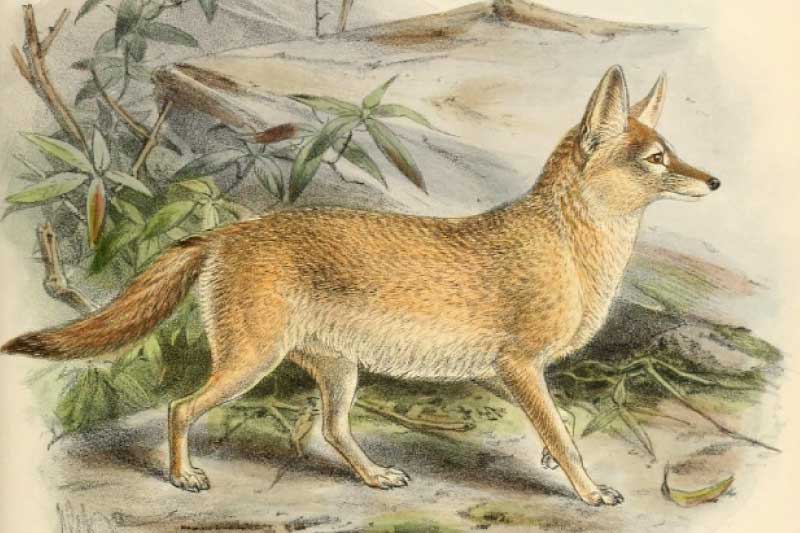
- Scientific Name: Vulpes pallida
- Where found: Sahel region of Africa
- Weight: 1.7 to 3.6 kg (3.7 to 7.9 lb)
- Length: 0.4 to 0.6 meters (1.3 to 2 feet) body length with a tail of about 25 to 30 cm
- IUCN conservation status: Least Concern
The Pale Fox is characterized by its pale coat, which blends into the sandy deserts and semi-deserts it inhabits. It is a solitary and nocturnal hunter, feeding on rodents, insects, and occasionally plants.
Little is known about either the social structure or life cycle of the pale fox due to its elusive nature and the challenging environment in which it lives.
Rüppell’s Fox
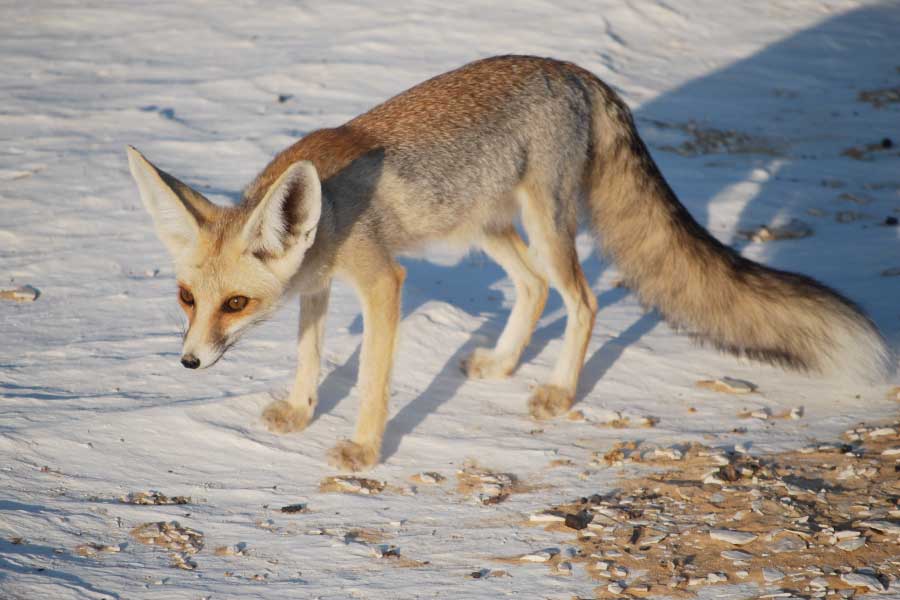
- Scientific Name: Vulpes rueppellii
- Where found: Middle East and North Africa, including the Sahara Desert
- Weight: 1.5 to 3.5 kg (3.3 to 7.7 lb)
- Length: 0.4 to 0.52 meters (1.3 to 1.7 feet) body length with a tail of about 25 cm
- IUCN conservation status: Least Concern
Rüppell’s Fox is distinguished by its sandy or grey coat and black-tipped tail. Like other foxes that live in deserts, it has large ears that help keep it cool. Rüppell’s Fox has an omnivorous diet that includes insects, rodents, and plants.
This African fox is mostly nocturnal and lives in burrows.
Red Fox

- Scientific Name: Vulpes vulpes
- Where found: Nearly worldwide, including North America, Europe, Asia, and parts of North Africa and the Arctic
- Weight: 3.6 to 7.4 kg (7.9 to 16.3 lb)
- Length: 0.45 to 0.9 meters (1.5 to 3 feet) body length with a tail of about 30 to 55 cm
- IUCN conservation status: Least Concern
The Red Fox is the largest and most widespread of the fox species. This familiar canid is known for its bright orange-red coat and bushy, white-tipped tail, with individuals from some regions having either silvery or gray / black fur. The length of the fur also varies, with red foxes living further north having longer and denser coats.
Known for its adaptability, the red fox can live in a wide range of habitats, from urban areas to wilderness. The red fox also has a varied diet, which consists of rodents, birds, fruits, and insects.
The red fox has complex social structures and communication methods. Its barks, whimpers and wails can be heard not just in the wilderness, but also in towns and even cities in many parts of the Northern Hemisphere.
Swift Fox
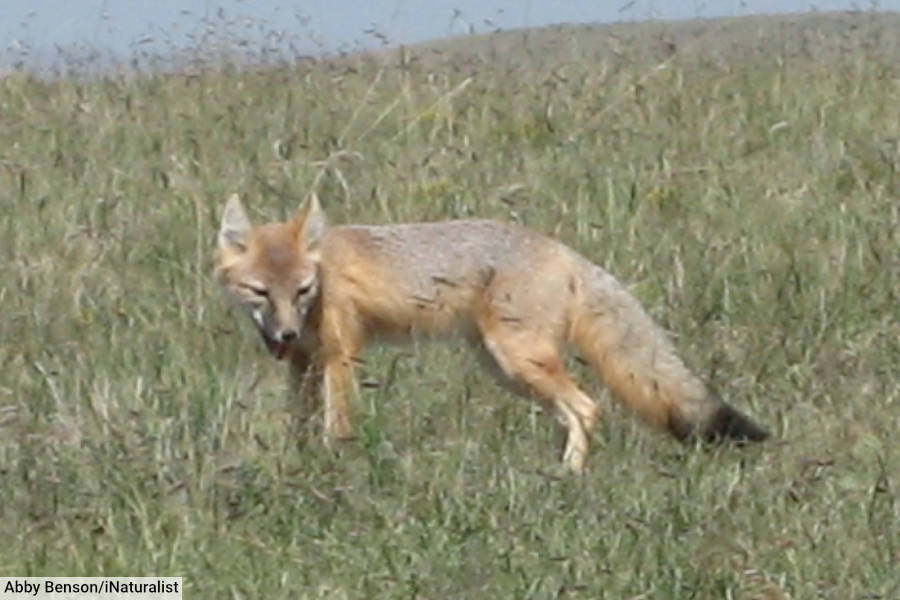
- Scientific Name: Vulpes velox
- Where found: North American Great Plains, from Texas to Montana
- Weight: 1.8 to 3 kg (4 to 6.6 lb)
- Length: 0.38 to 0.5 meters (1.25 to 1.64 feet) body length with a tail of about 20 to 30 cm
- IUCN conservation status: Least Concern
The Swift Fox is a North American fox species named for its speed – this small canid is capable of reaching speeds of up to 60 km/h (37 mph). It has a tan or yellow-gray coat, which helps it to blend into the grasslands it inhabits.
The swift fox feeds on small mammals, birds, and insects. It is nocturnal and lives in burrows that provide shelter and protection from predators. The species is closely related to the kit fox, and the two species can breed to produce hybrid offspring.
Tibetan Fox
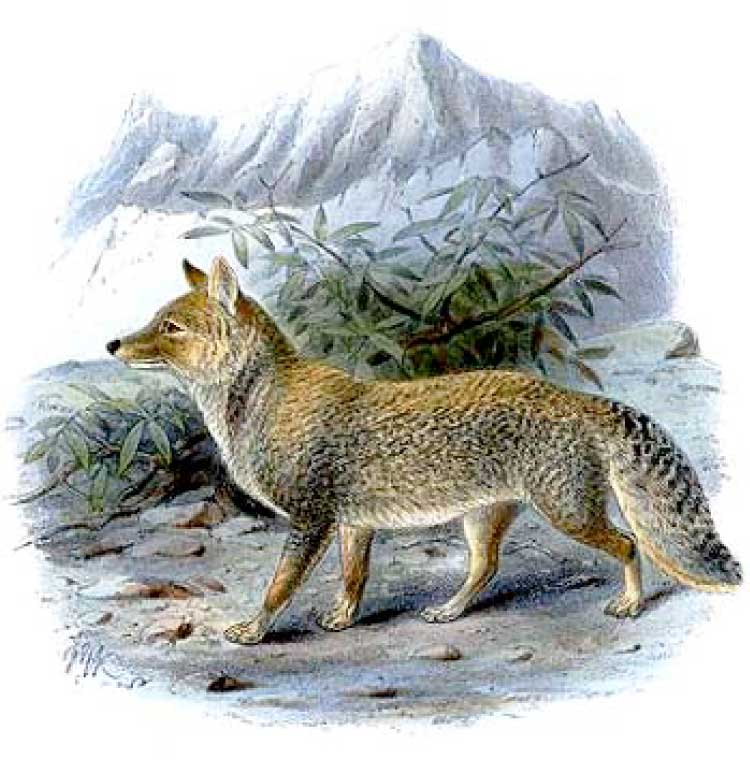
- Scientific Name: Vulpes ferrilata
- Where found: Tibetan Plateau, China, India, Nepal, and Bhutan
- Weight: 4 to 5.5 kg (8.8 to 12.1 lb)
- Length: 0.6 to 0.9 meters (2 to 3 feet) body length with a tail of about 40 cm
- IUCN conservation status: Least Concern
The Tibetan fox, or Tibetan sand fox, has a square face, small, rounded ears, and dense fur that helps it survive in the high-altitude, cold desert environments in which it is found. It primarily feeds on pikas, rodents, and other small mammals.
The Tibetan fox is typically solitary and, unlike many foxes, is diurnal (active during the day).
South American Foxes (Genus Lycalopex)
The South American foxes are a genus (Lycalopex) of canids found in South America. They are not true foxes, and are more closely related to wolves and jackals than they are to the members of Vulpes. They are known as “zorros” in Spanish.
Culpeo
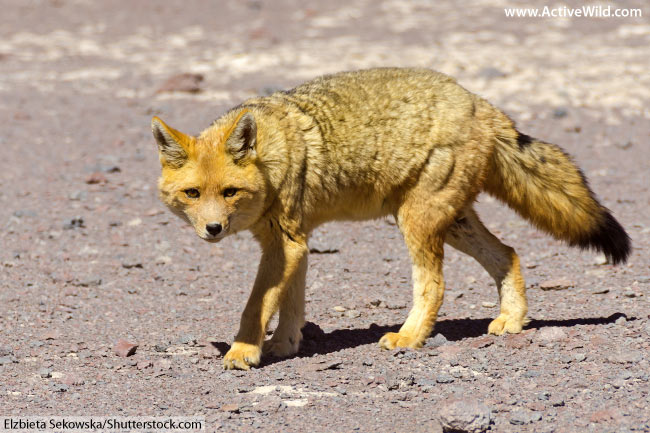
- Common Name(s): Culpeo, Andean Fox
- Scientific Name: Lycalopex culpaeus
- Where found: Western South America, from Ecuador and Peru down through Bolivia, Chile, and Argentina
- Weight: 5 to 13.5 kg (11 to 29.8 lb)
- Length: 0.6 to 1.2 meters (2 to 4 feet) body length with a tail of about 25 to 40 cm
- IUCN conservation status: Least Concern
The Culpeo is the second-largest canid in South America, after the maned wolf. It has a distinctive reddish-gray fur, with a white chin and a bushy, black-tipped tail.
This South American fox species is adaptable, inhabiting a range of environments from the arid plains of the Patagonian steppe to the high altitudes of the Andes mountains. Its diet is likewise varied, and includes rodents, rabbits, birds, and occasionally livestock, which sometimes brings it into conflict with farmers.
The Culpeo is a solitary animal, primarily active during the twilight hours and at night.
Darwin’s Fox
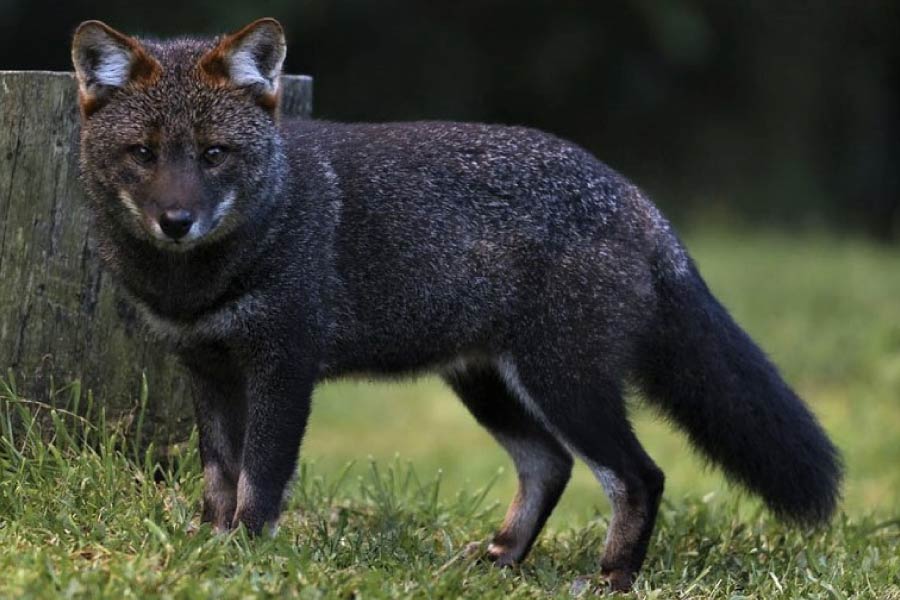
- Scientific Name: Lycalopex fulvipes
- Where found: Chile, primarily on Chiloé Island and a small part of the mainland near Nahuelbuta National Park
- Weight: 2 to 4 kg (4.4 to 8.8 lb)
- Length: 0.48 to 0.58 meters (1.57 to 1.9 feet) body length with a tail of about 20 to 25 cm
- IUCN conservation status: Endangered
Darwin’s Fox is distinguished by its dark, dense fur and relatively small size. It is predominantly nocturnal, feeding on birds, small mammals, and invertebrates, as well as fruit.
Found only in Chile, this elusive fox species lives in dense forest habitats. Its limited distribution, habitat loss due to deforestation, and diseases spread by domestic dogs have contributed to its endangered status.
Hoary Fox
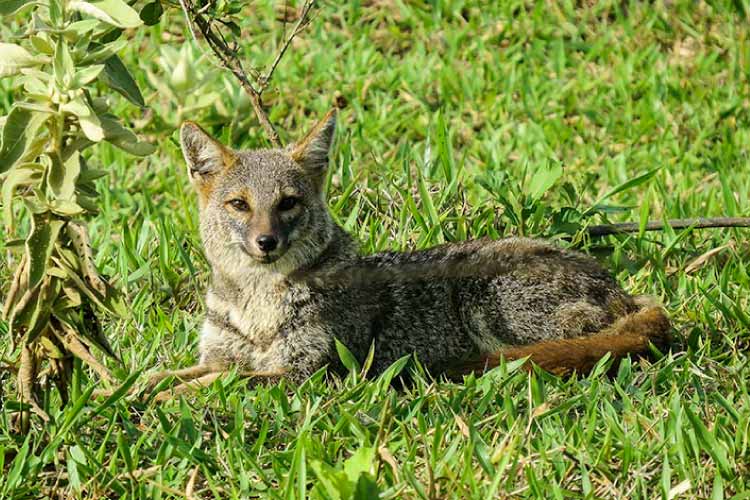
- Scientific Name: Lycalopex vetulus
- Where found: Central Brazil, particularly in the Cerrado biome
- Weight: 3 to 4 kg (6.6 to 8.8 lb)
- Length: 0.58 to 0.64 meters (1.9 to 2.1 feet) body length with a tail of about 25 to 30 cm
- IUCN conservation status: Near Threatened
The Hoary Fox has reddish-gray fur and a slender build. Unlike other canids, it primarily feeds on termites and other insects, but will also eat birds and other small vertebrates.
An inhabitant of the Cerrado, a vast tropical savanna in Brazil, the hoary fox is both nocturnal and solitary.
Its specialized diet and adaptation to a specific ecosystem make the hoary fox a unique member of the fox family. Habitat destruction is a threat to the species, which is rated “Near Threatened”.
Pampas Fox

- Scientific Name: Lycalopex gymnocercus
- Where found: The pampas of South America, including Argentina, Uruguay, Paraguay, and southern Brazil
- Weight: 4 to 8 kg (8.8 to 17.6 lb)
- Length: 0.6 to 0.7 meters (2 to 2.3 feet) body length with a tail of about 30 to 40 cm
- IUCN conservation status: Least Concern
The Pampas Fox, also known as the Azara’s fox, has pale brown / gray fur and a bushy tail. It is adaptable, inhabiting open plains, pampas, and sparse woodlands.
A nocturnal species, the pampas fox has an extremely varied diet that ranges from insects to armadillos.
Sechuran Fox
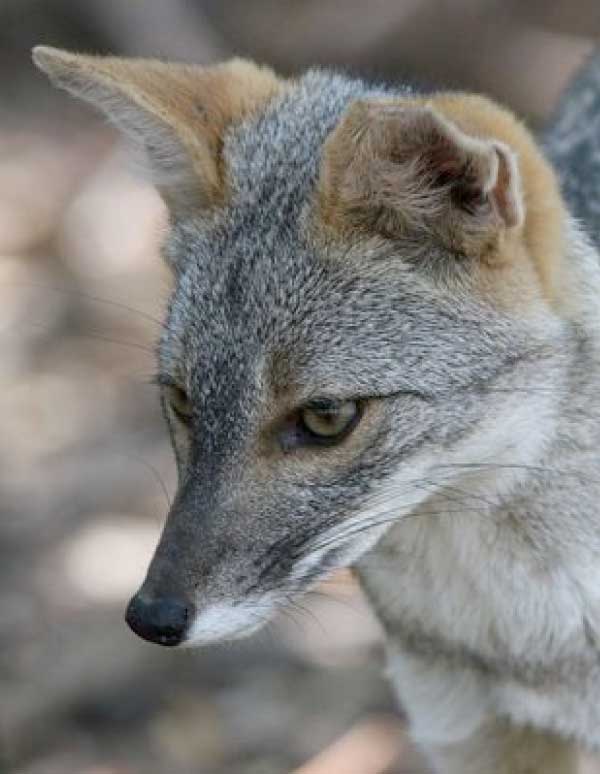
- Scientific Name: Lycalopex sechurae
- Where found: The Sechura desert in northern Peru and southwestern Ecuador
- Weight: 2.6 to 4.2 kg (5.7 to 9.3 lb)
- Length: 0.5 to 0.6 meters (1.64 to 1.97 feet) body length with a tail of about 20 to 30 cm
- IUCN conservation status: Near Threatened
Found in the Sechura desert on the coast of Ecuador and Peru, the Sechuran Fox is adapted to arid environments, with a light gray to beige coat that helps it blend into the desert landscape.
Like most foxes, the Sechuran Fox is an omnivore. It feeds on a wide range of foods, including plants, insects, and small vertebrates. This elusive, nocturnal species is threatened by persecution and habitat loss.
South American Gray Fox (Chilla)
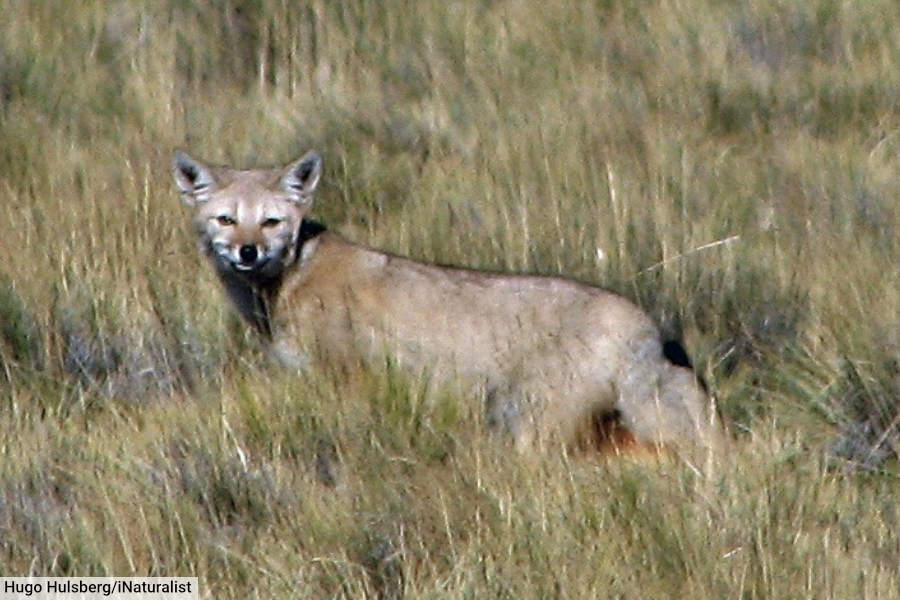
- Scientific Name: Lycalopex griseus
- Where found: Southern South America, including Chile, Argentina, and small parts of Peru
- Weight: 2.5 to 5.5 kg (5.5 to 12.1 lb)
- Length: 0.65 to 1.1 meters (2.13 to 3.6 feet) total length including tail
- IUCN conservation status: Least Concern
The South American Gray Fox is also known as the chilla, or Patagonian fox. It has distinctive gray and reddish fur, with a bushy, black-tipped tail. It is adaptable, and found in various environments, from forests to open shrublands.
An omnivore, the South Ameri8can gray fox feeds on rodents, birds, insects, and fruit.
Other Animals Known As Foxes
Below is information on a selection of other members of the dog family that are known as foxes, but that aren’t true foxes.
Crab-Eating Fox
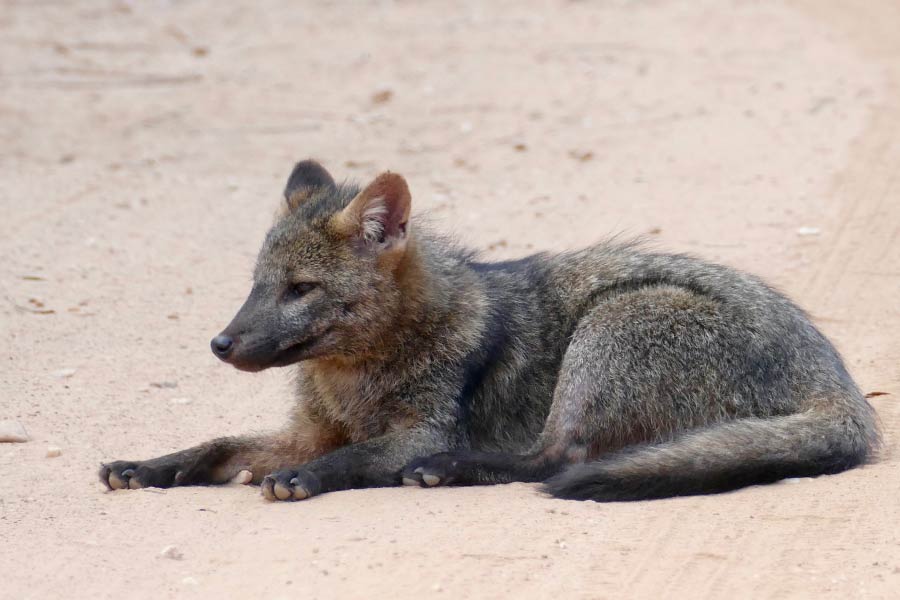
- Scientific Name: Cerdocyon thous
- Where found: South America, including Brazil, Venezuela, Colombia, Uruguay, Paraguay, and Argentina
- Weight: 5 to 8 kg (11 to 17.6 lb)
- Length: 0.6 to 0.7 meters (2 to 2.3 feet) body length with a tail of about 20 to 30 cm
- IUCN conservation status: Least Concern
The Crab-eating Fox is adapted to a variety of habitats, from savannas to forests near rivers and streams. As its name suggests, its diet includes crabs, along with other small animals and plant matter. This South American fox is recognized by its greyish-brown fur, with darker markings on its legs and face. It is mostly nocturnal, forming monogamous pairs that share territory and parenting duties.
Bat-Eared Fox
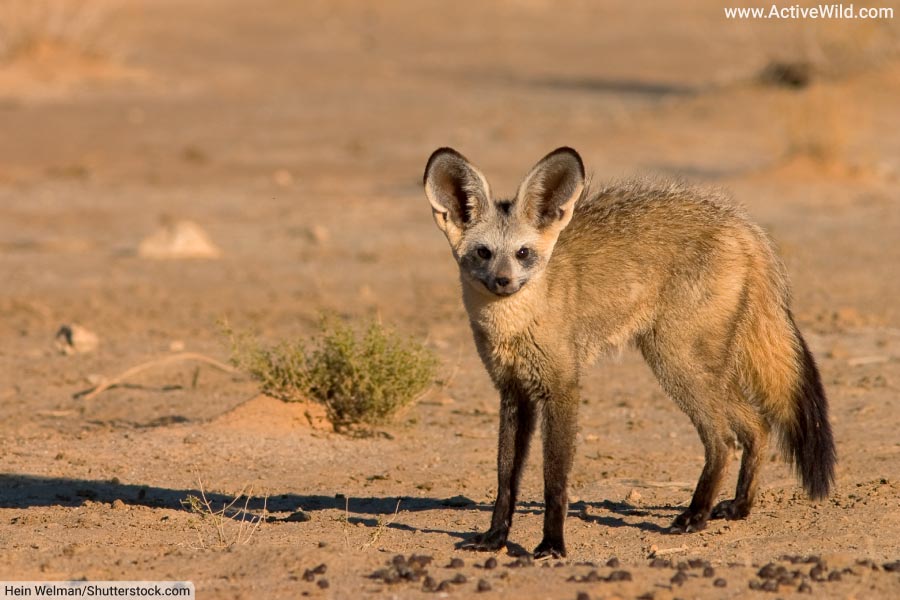
- Scientific Name: Otocyon megalotis
- Where found: East and Southern Africa, including the savannahs of Kenya, Tanzania, and southern regions of Angola, Zambia, and South Africa
- Weight: 3.5 to 5 kg (7.7 to 11 lb)
- Length: 0.55 to 0.75 meters (1.8 to 2.5 feet) body length with a tail of about 25 to 35 cm
- IUCN conservation status: Least Concern
The Bat-eared Fox is an African canid notable for its large ears, which are used for thermoregulation and detecting prey underground. It has a specialized diet, primarily feeding on insects such as termites and beetles.
This species has a dark, silver-gray coat with lighter underparts. Highly social, it lives in small family groups and has a complex communication system.
Gray Fox
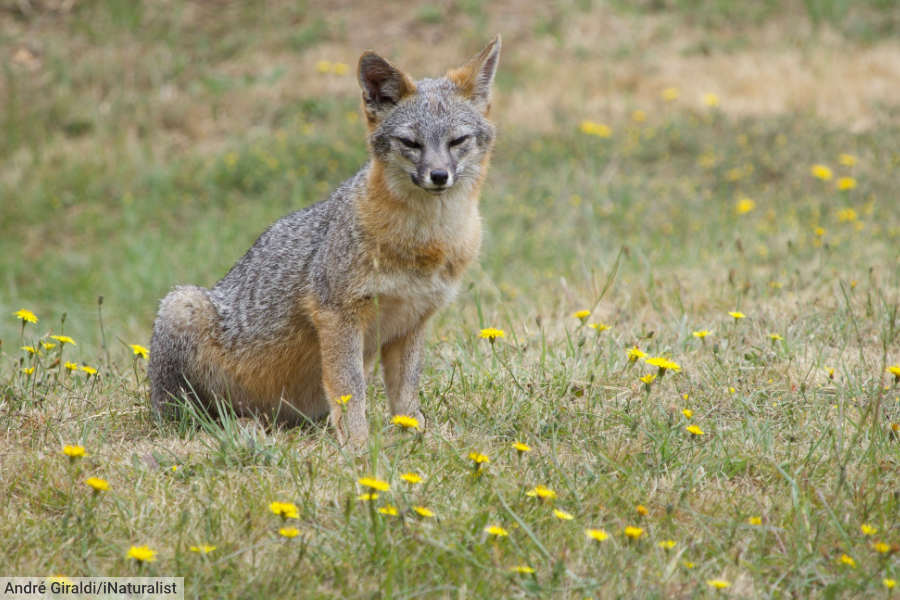
- Scientific Name: Urocyon cinereoargenteus
- Where found: North America, from southern Canada down to Venezuela and Colombia
- Weight: 3.6 to 7 kg (8 to 15.4 lb)
- Length: 1 to 1.2 meters (3.3 to 3.9 feet) total length including tail
- IUCN conservation status: Least Concern
The gray fox is known for its distinctive grizzled gray fur on the back and reddish-brown on the sides, chest, and legs.
Unlike many other canids, the gray fox is capable of climbing trees thanks to its strong, hooked claws, an adaptation specifically for this purpose. It is mostly nocturnal and solitary, except during the breeding season.
The closest relative of the gray fox is the island fox. Together, they make up the genus Urocyon.
Island Fox

- Scientific Name: Urocyon littoralis
- Where found: Six of the Channel Islands off the coast of southern California, USA
- Weight: 1 to 2.8 kg (2.2 to 6.2 lb)
- Length: 0.48 to 0.5 meters (1.6 to 1.64 feet) body length with a tail of about 11 to 29 cm
- IUCN conservation status: Near Threatened
The island fox is significantly smaller than its mainland relative, the gray fox. It has adapted to island life with a diet that includes insects, fruits, birds, and small mammals.
This North American fox exhibits varied colors, from gray to reddish-brown, and has a more docile nature than that of other fox species. Conservation efforts have been crucial in recovering populations from near extinction.
The island fox has six subspecies; one for each of the islands it is found on.
Discover More With Active Wild
Visit our main animals page for links to animal information and a complete guide to the animal kingdom: Animals
You can find out more about dogs on this page: Dog Facts
You can see EVERY species of dog on this page: Wild Dog Species List with Pictures and Facts
Discover all eight bears on this page: Types of Bears with Pictures & Facts

